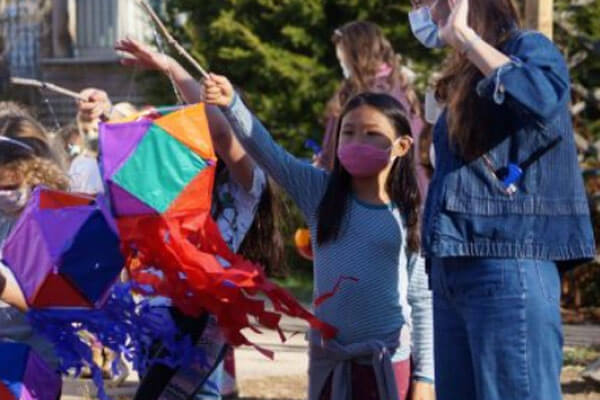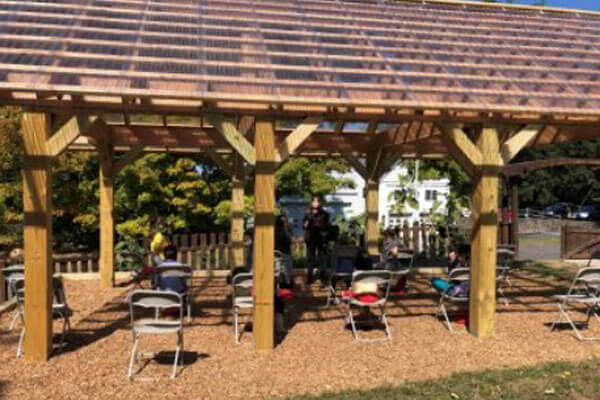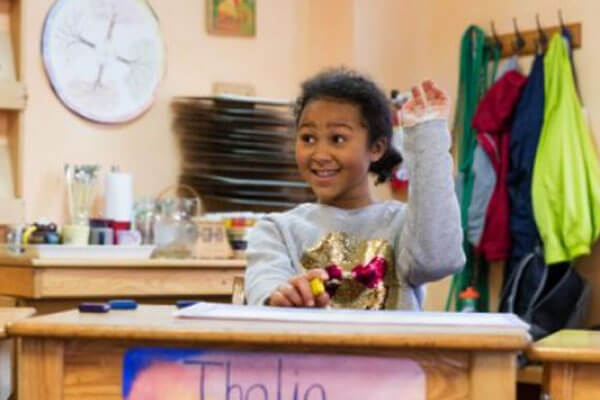Grade School
“I want to work with people whose imaginations have been unleashed and who tackle problems as challenges rather than see them as obstacles. An education enriched by the creative arts should be considered essential for everyone.”
~ John Sculley, former chairman/CEO of Apple Computers, Inc. ~



Interested in enrolling your son or daughter into our private grade school? We encourage you to contact our admissions office today for more information about our child-centered learning program or to arrange a visit to our campus.
CLASS TEACHER
The Class Teacher ideally takes the same class of children through eight years of grade school, teaching all the Main Lesson subjects. For the teacher, this means time to really get to know the children and help their gifts unfold. For the students, this relationship offers stability and guidance.
MAIN LESSON
Main Lesson is the two-hour period every morning in which the main subject of the day is presented. That subject―for example, mathematics, history, botany, or acoustics―is taught daily for a 3- or 4-week block and then put aside, perhaps to be continued later in the term. This approach allows for concentrated, in-depth experience; freshness and enthusiasm; and time to digest what has been learned.
TEXTBOOKS
We do not use textbooks. Instead, after teachers have presented material to the class, the students create individual books for each subject, recording and illustrating the substance of their lessons. These artistic and beautiful creations are an important way in which art is integrated into every subject.
STUDENT ASSESSMENT AND HOMEWORK
Number and letter grades are not given at our school until 7th Grade. At the end of the school year, teachers write progress reports, which present a picture of the child’s academic, artistic, and personal development as well as a description of the material covered in each subject. Conferences are scheduled twice a year to provide parents and teachers an opportunity to share their impressions and concerns. Additional conferences may be scheduled at any time when parents have a special concern about their child. We do not conduct standardized tests and homework does not begin in earnest until around 5th grade.
About Our Nature and Play-Based Preschool
1. Submit an Inquiry: Having families submit an inquiry allows us a chance to provide an exchange of information so that you can learn more about our programs and we can learn more about your child and family. The Waldorf curriculum is grounded in the knowledge that children have distinct, age-related educational and emotional needs according to their naturally unfolding stages of development.
Social Inclusion and Cyber Civics
The HVWS Leadership Council and College of Teachers forged a relationship with the Women’s Center of Greater Danbury in 2016. This organization offers workshops and presentations for students of all ages on topics such as Cyber Safety, Bullying and Upstanders, and Forging Healthy Friendships. We are pleased to welcome the Women’s Center to HVWS for regular workshops with grade school students. Additionally, in 2018 we added a Cyber Civics block to our middle school instruction.
Language Arts and The Humanities
Letters are learned the way they originated in human history: first graders hear stories, draw pictures, and discover the letter in the gesture of the picture. This process is accompanied by phonetic work in songs, poems, and games, helping to establish a joyful and living experience of language. Through the grades, texts taken from the humanities curriculum―for example the book of Genesis, the Bhagavad-Gita, or the Kalevala from Finland―provide material for reading practice. The Humanities begin in first grade with folk and fairy tales and continue in second grade with mythology and legends; third grade with Old Testament stories; fourth grade with Norse mythology; and the ancient cultures of India, Egypt, Persia, Mesopotamia, and Greece in fifth grade. These studies provide the background for the study of history and arts presented through excerpts from original texts. By living in these cultures through their legends and literature, students gain flexibility and an appreciation for the diversity of humankind. By the close of eighth grade, the children have journeyed through Rome to the Middle Ages, the Renaissance, the Reformation, the Age of Exploration, and up to the present day. Reading from the world’s great literature reveals the pain and joy of modern consciousness. In creative writing, stormy moods and emotions are explored through the writing of poems, short stories, and expository and persuasive pieces, with grammar’s structure providing boundaries. Writing assignments like book summaries and research reports include accurate, as well as narrative, descriptions of science experiments. Recitation of the world’s great poetry, echoing the human drama, continues through our middle school classes. Debating—between Roman orators, for example—develops emerging reasoning skills and satisfies argumentative tendencies in growing adolescents.
Mathematics
Science
World Languages
“Through the inner flexibility of their speech organ, the children find their way to a flexibility of soul and an openness that has an effect on their entire later life, and especially on their social abilities. The foreign language lesson is suited like practically no other lesson to encourage openness and awaken interest for what is foreign to oneself―and in our time of widespread racism and social conflict on both a small and large scale, this is a pedagogical mission of the first order.”
~Rudolf Steiner, founder of Waldorf Education~
The goal of world language teaching in Waldorf Schools is to encourage a positive attitude towards people of other cultures and languages. We strive to foster human understanding through language and culture. We help the students see the world in a different way and broaden their own perspectives. At HVWS we teach Spanish and German. Learning a new language strengthens the ability to listen to another person, to follow and grasp the other person’s spoken and unspoken intentions. Being competent in multiple languages supports the capacity for flexible, mobile thinking, since different languages access different realms of experience, and this in turn stimulates greater interest in the world and other people. Language classes are taught orally in first through third grades through everyday conversation, traditional songs, poems, stories, and games, with the addition in fourth grade of writing, reading, and grammar lessons. Classes are conducted in the target language.
The Arts
Practical arts, handwork, and crafts are an integral part of the Waldorf curriculum. Decades before brain research could confirm it, Rudolf Steiner recognized that brain function was founded on body function. Learning these skills in the early grades leads to motor skills that later metamorphose into lively thinking and enhanced intellectual development. Coordination, patience, perseverance, and imagination are developed through practical work. The creation of beautiful handmade objects, increasingly rare in a utilitarian society, also feeds the child’s sense of accomplishment and aesthetics, and the use and movement of hands and limbs offer an important counterpoint to intellectual pursuits.
Our students develop increasingly complex artwork through their years in middle school. Sixth graders sew a cloth doll or stuffed animal, combining technical skill with a new-found awareness of the human or animal form. Seventh graders design and knit a full-size wool sweater—a lengthy project requiring concentration, consistency, and purposeful work. To enhance their study of the Industrial Revolution and their fascination with technology, eighth graders use a sewing machine to create a garment.
Music permeates life in the Waldorf school through a curriculum designed to develop the innate musicality with which every child is born. In first grade, students sing and learn to play simple wooden pentatonic flutes. Both activities are practiced daily through the elementary school years. In third grade, diatonic flutes are introduced and all students begin to play a string instrument. Students may choose a wind instrument beginning in sixth grade. In the upper grades, all students belong to the Chorus and Orchestra. This demands increasing precision and skill as students study more sophisticated pieces. There are two concerts a year at which both groups perform. In addition, all students play 3- or 4-part music in their class Recorder Ensembles. Music is taught not only for its own sake and the joy it engenders, but also because it brings a strong harmonizing and humanizing force into the child’s life, strengthening the will and capabilities for the future.
Every grade performs a class play each year, with the subject arising from the curriculum of the main lesson. The presentations become more complex as the children can handle longer verses and separate parts. By the upper grades, the children are capable of complex and sophisticated plays–often Shakespeare in eighth grade–including lots of memorization and more elaborate costumes, props, blocking, choreography, and singing. Producing a play, from beginning to end, is an experience that creates and reinforces the social bonds of the class.
